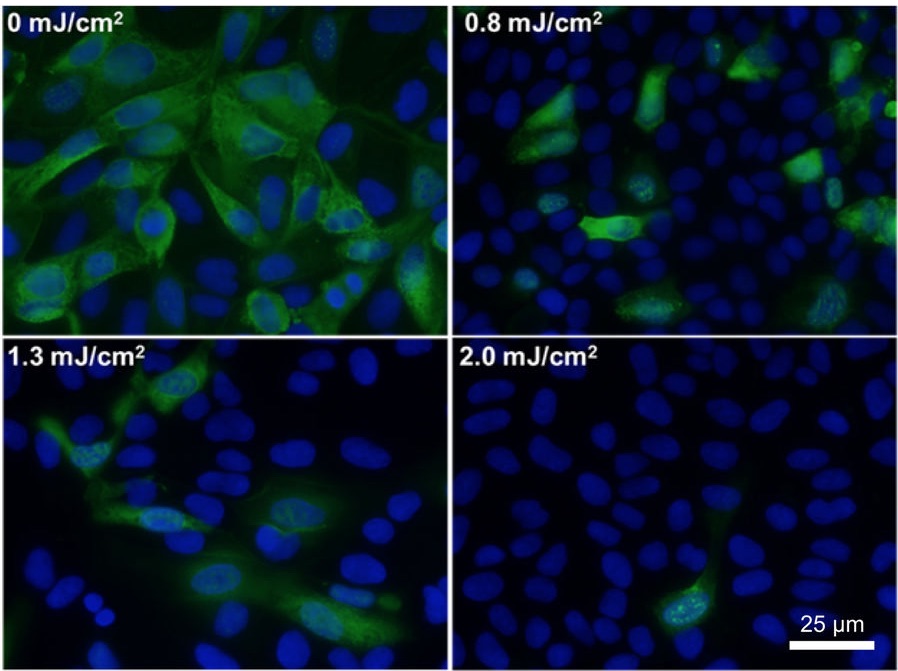This Special UV Light Could Zap Flu Germs from the Air

A special type of ultraviolet (UV) light may be able to "zap" flu germs right out of the air, a new study suggests.
The study found that "far ultraviolet C" (far-UVC) light could kill airborne flu virus particles in a lab setting that was designed to be similar to a public space. What's more, the researchers have previously shown that this type of UV light doesn't damage human tissue.
Although the new findings still need to be confirmed with future studies, it's possible that one day, this light might be used in public spaces as a "safe and efficient method for limiting the transmission and spread of airborne-mediated microbial diseases, such as influenza," David Brenner, director of the Center for Radiological Research at Columbia University Irving Medical Center in New York, said in a statement.
The study was published today (Feb. 9) in the journal Scientific Reports.
Researchers have known for decades that so-called broad-spectrum UVC light, which has a wavelength between 200 and 400 nanometers (nm), is effective at killing bacteria and viruses. In fact, a "germicidal UVC lamp" is often used to disinfect surgical equipment. However, this UV light is hazardous to human health, and can cause skin cancer and cataracts, Brenner said. [27 Devastating Infectious Diseases]
But recently, Brenner and his colleagues found that a narrow range of UVC light — far-UVC light, around 207 to 222 nm — could kill microorganisms without causing biological damage to exposed skin.
"Far-UVC light has a very limited range and cannot penetrate through the outer dead-cell layer of human skin or the tear layer in the eye, so it's not a human health hazard," Brenner said. "But because viruses and bacteria are much smaller than human cells, far-UVC light can reach their DNA and kill them."
Sign up for the Live Science daily newsletter now
Get the world’s most fascinating discoveries delivered straight to your inbox.
In the new study, the researchers released aerosolized particles of the H1N1 flu virus into a test chamber, which was designed to simulate human coughing and breathing. Then, they applied low doses of far-UVC light, and found that the light efficiently inactivated more than 95 percent of the flu virus particles — about the same effectiveness as a conventional germicidal UVC lamp. When the researchers exposed skin cells to the airborne flu viruses that were treated with far-UVC light, the viruses were not able to infect the skin cells.
The researchers noted that while the effectiveness of far-UVC light might vary depending on the microbe (for example, the level of viral inactivation might be different with other strains of flu), these variations are unlikely to be very large.
The study was funded by the Shostack Foundation (a philanthropic organization) and the National Institutes of Health.
Original article on Live Science.

Rachael is a Live Science contributor, and was a former channel editor and senior writer for Live Science between 2010 and 2022. She has a master's degree in journalism from New York University's Science, Health and Environmental Reporting Program. She also holds a B.S. in molecular biology and an M.S. in biology from the University of California, San Diego. Her work has appeared in Scienceline, The Washington Post and Scientific American.










